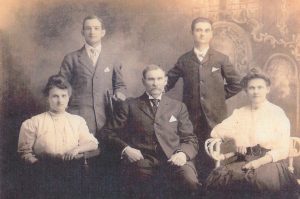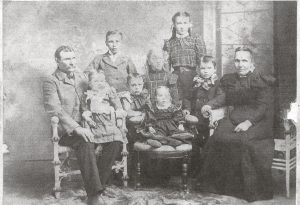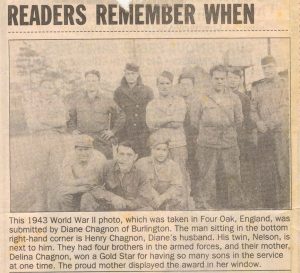Each month I have been publishing a list of relatives who died in each month going back to 1900. I recently was asked who some of these relatives are and how we are related. Starting with September I will give a brief narrative of who these relatives are.
Here is a brief narrative of who they are and how they are related. Those who are related and still living are not mentioned due to privacy.

George Ashline 4/25/925-9/25/1996
George is the son of Frank and Athella V. Chagnon, the husband of Jane (Fluery) Ashline and the father of Michael Ashline.
John H. Bartlette, Jr 10/10/1942-9/17/2008
John is the husband of Nina Marie (Valliere) Bartlette.
Albert Blow 9/4/1935-9/21/2012
Albert is the son of Jasper and Glenna (Ploof) Blow , the husband of Anne Lillian Cameron and the brother of Richard Blow.
Louise Rayta Bosley 12/19/1907-9/11/1997
Louise is the wife of Albert Bosley and the mother of Raymond and Kenneth Bosley.
Irma Carter Bushey 5/17/1924-9/4/1993
Irma is the daughter of Frederick and Irene (Rock) Carter, the wife of David Bushey and the mother of Joan Jones Bushey.
Delina Bouchard Chagnon 3/15/1881-9/13/1944
Delina is the daughter of Louis and Jennie (Plante) Bouchard, wife of Narcisse “ Nelson” Chagnon and the mother of 14 Children from whom we are descended from.
Alexander Chagnon 3/22/1915-9/18/1992
Alexander is the son of “Nelson” and Delina (Bouchard) Chagnon, husband of Lucille Corron and father of 9 children.
Joan Bushey Chagnon 10/3/1940-9/12/2011
Joan is the daughter of David and Irma (Carter) Bushey.
Lynn Taft Chagnon 11/17/1847-9/16/2012
Lynn is the daughter of Fred and Marion(Vezina), wife of Robert Chagnon and mother of 2 children.
Mary L. Sorrell Despaw 1885-9/8/1957
Mary is the wife of Grover Despaw and mother of 7 children. Her son Frank is married to Mae Ashline who is the daughter of Frank and Athella (Chagnon) Ashline.
Sophia Bouchard Dorey 6/2/1889-9/30/1944
Sophia is the daughter of Louis and Louise (Morrow) Bouchard, wife of Joseph Dorey, and mother of 7 children. Sophia is the step sister of Delina Bouchard Chagnon. NOTE: Sophia died 17 days after her sister Delina.
Lori Louis Dusharm 1845-9/2/1931
Lori Louis is the husband of Sophia Coon, the father of Charles Dusharm and husband of Eva Chagnon. Eva is the daughter of Nelson and Delina (Bouchard) Chagnon.
Earl W. Gonyo 7/29/1910-9/9/1987
Earl is the son of Charles and Josephine (Ducharme) Gonyo, the husband of Gladys Bessette and Mary T. Hubbard and his the brother of Herbie Gonyo.
Richard Gonyo 7/14/1920-9/12/1992
Richard is the son of Charles and Josephine (Ducharme) Gonyo, the husband to Norma Bates and the father of 7 children. He is the brother of Herbie and Earl Gonyo.
Dorothy Dusharm Lafond 10/10/1924-9/29/1978
Dorothy is the daughter of Charles and Eva (Chagnon) Dusharm, the wife of Levi Lafond and John Paquette. She is the mother of 2 children.
Joseph G. Lamarche2/19/1915-9/11/1988
Joseph G. is the son of Delphis and Mary (Paquet) Lamarche, the husband of Dorothy S. (Pratt) Lamarche and the father of 7 children.
Alfred J. Lamore 10/21/1907-9/6/1951
Alfred is the husband of Emma (Houle) Lamore and the father of Arthur “Skip” Lamore who is husband of Elizabeth (Dusharm) Lamore.
Orissa Trudeau Langlois 2/9/1905-9/19/1930
Orissa is the wife of Mazip Langlois, mother of Viola (Langlois) Chagnon. Viola is the wife of Alexis Chagnon, Jr. Alexis is the son of Alexander Chagnon who is the brother of Narcisse “Nelson” Chagnon.
Maurice M. Lapierre 1/11/1930-9/19/2008
Maurice is the husband to Betty Bolton and Pauline Marcotte and father 2 children.
Irene Gonyo Maskell 7/9/1925-9/27/2012
Irene is the daughter of Herbie and Edith (Chagnon) Gonyo, the wife of Robert Lefebvre and Ernest Maskell and mother 4 children.
Joseph Poirier 4/14/1884-9/6/1928
Joseph is the son of Adolphe and Rosanna (Desmarais) Poirier, the husband of Clara (Monty) Poirier and the father of 8 children.
Francis Proulx 5/10/1908-9/30/1992
Francis is the son of Philias and Mary Helen (Wheel) Proulx, the husband of Lillian (Chagnon) Proulx and the father of 5 children.
Marie Veronica Barbeau Riley 5/2/1904-9/1/1979
Marie Veronica is the wife of Lawrence Riley.
Randall Shelley 2/5/1930-9/17/2009
Randall is the son of Samuel and Gladys (Hinote) Shelley, the husband of Ruth Gonyo and the father of 4 children.
Emilie Krebser Stapel 7/13/1903-9/1/1974
Emilie is the daughter of Henry and Emilie (Meili) Kresber, the wife of Oskar Stapel.
Frank Thompson, Jr. 2/13/1949-9/30/2013
Frank is the son of Frank and Irene (Barnes) Thompson and the brother of Paul Thompson.
Carline Valyou 8/30/1936-9/26/1940
Carline is the daughter of Moses and Clara (Chagnon) Valyou.
Robert Whitehouse 4/11/1930-9/10/2011
Robert is the son of Lucille Whitehouse, the husband of Pearl Gonyo and the father of 2 children.
If you would like to know more about any of these relatives or you find any errors, please do not hesitant to contact me. I hope that you have found this useful and now know a little more about your relatives.
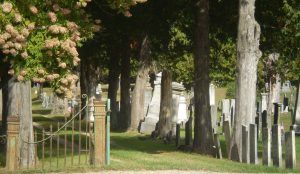
 Over the course of time signs of damage can begin to show on gravestones. Weather and pollution can create many different situations that can cause serious damage.
Over the course of time signs of damage can begin to show on gravestones. Weather and pollution can create many different situations that can cause serious damage.
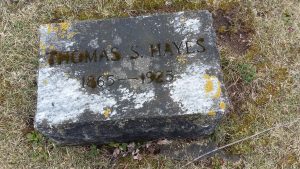 When looking for algae, fungi, and lichen, they can be green, gray, black, red, orange, yellow, blue, or even brown in color. All these organisms can damage the gravestone by trapping moisture on the stone and just beneath the surface of the stone and then when there is a temperatures change, this moisture can freeze and thaw causing expansion and contraction within the stone, which leads to weakening or cracking the stone. Plants, like grass, ivy, moss, trees, bushes and ferns that grow on or near gravestones can be damaging also, because their roots can penetrate the stone and cause splitting, or can cause the stone to shift, putting it off balance and possibly falling over and breaking. So when you are doing your plantings do make sure they have room to grow and not interfere with the stone. And when your plantings become too mature, dig them up and plant small young planting again.
When looking for algae, fungi, and lichen, they can be green, gray, black, red, orange, yellow, blue, or even brown in color. All these organisms can damage the gravestone by trapping moisture on the stone and just beneath the surface of the stone and then when there is a temperatures change, this moisture can freeze and thaw causing expansion and contraction within the stone, which leads to weakening or cracking the stone. Plants, like grass, ivy, moss, trees, bushes and ferns that grow on or near gravestones can be damaging also, because their roots can penetrate the stone and cause splitting, or can cause the stone to shift, putting it off balance and possibly falling over and breaking. So when you are doing your plantings do make sure they have room to grow and not interfere with the stone. And when your plantings become too mature, dig them up and plant small young planting again.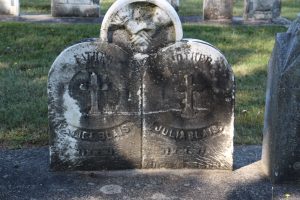 Marble is composed mainly of calcium carbonate. Lichen secretes an acid that dissolves calcite and can cause serious damage to the surface of marble gravestones to the point that they become unreadable.
Marble is composed mainly of calcium carbonate. Lichen secretes an acid that dissolves calcite and can cause serious damage to the surface of marble gravestones to the point that they become unreadable.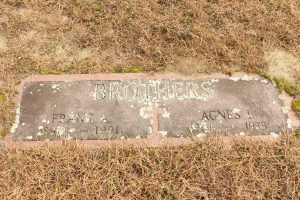 Gravestones that are flat on the ground are very easily damaged by dirt, leaves, grass clippings and even mud. The minerals in soil such as iron or copper can stain gravestones and sandy soils can act as sand paper and wear the outer surface of a stone. Upright gravestones can also be damaged from strong winds particularly if they are in a sandy region.
Gravestones that are flat on the ground are very easily damaged by dirt, leaves, grass clippings and even mud. The minerals in soil such as iron or copper can stain gravestones and sandy soils can act as sand paper and wear the outer surface of a stone. Upright gravestones can also be damaged from strong winds particularly if they are in a sandy region.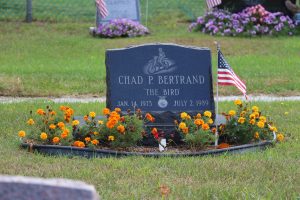
 to Rootmagic. I can search their database by a person’s name or by a source. There is a very good triangulation tool that shows when you and your Match match up with a third person. They show you total cMs (centiMorgans), the largest cM, how many segments of cMs each Match and the start and end positions of each cM, which is important when looking for triangulation Matches. The Chromosome browser map shows which Chromosome they match you on. I was able to download my Raw data, and upload it to Gedmatch, which is a third party website that has even more tools to help analysis my data. You can also download your entire list of Matches, which goes as low as 7cMs. Anything below this can possibly give you a false reading. The more cMs the closer the relationship the Match will be. You can also download a shared Match list. They do an ethnicity estimate. In your shared Match list you can see any triangulation Matches. I have found several 1st, 2nd, 3rd, and 4th cousins on both my maternal and paternal side with MyHeritage.
to Rootmagic. I can search their database by a person’s name or by a source. There is a very good triangulation tool that shows when you and your Match match up with a third person. They show you total cMs (centiMorgans), the largest cM, how many segments of cMs each Match and the start and end positions of each cM, which is important when looking for triangulation Matches. The Chromosome browser map shows which Chromosome they match you on. I was able to download my Raw data, and upload it to Gedmatch, which is a third party website that has even more tools to help analysis my data. You can also download your entire list of Matches, which goes as low as 7cMs. Anything below this can possibly give you a false reading. The more cMs the closer the relationship the Match will be. You can also download a shared Match list. They do an ethnicity estimate. In your shared Match list you can see any triangulation Matches. I have found several 1st, 2nd, 3rd, and 4th cousins on both my maternal and paternal side with MyHeritage. over 3,000 Matches. The results were similar to those found on the other two sites. I created a family tee with 15 people on this site, which is 4 generations. You can view other Matches’ family trees if they have one. They have a Chromosome browser and an in common with tool. Familytreedna also gives the total shared cMs and the largest segment. You are able to see which chromosomes match and this is downloadable in an excel file. The Chromosome matches can be viewed in a table format or map layout which will give each Chromosome, the start and end of the distance, the size of the cM and number of matching snps. Familytreedna does offer YDNA & MtDNA testing which both Ancestry and MyHeritage do not. I do have a male relative’s YDNA results that was done with familytreedna and I just sent in my own MtDNA test to them. They are different from the autosomal results. YDNA and MtDNA are direct line ancestry results, meaning YDNA goes from son to father and on back several generations. The same for MtDNA which goes from daughter to mother and on back several generations in a straight line. Familytreedna offers a free downloadable guide book to help you to learn more about their results. This is written by Blaine Bettinger and Matt Dexter. Family Tree is free and gives you access to family trees of those who have put them up on their site.
over 3,000 Matches. The results were similar to those found on the other two sites. I created a family tee with 15 people on this site, which is 4 generations. You can view other Matches’ family trees if they have one. They have a Chromosome browser and an in common with tool. Familytreedna also gives the total shared cMs and the largest segment. You are able to see which chromosomes match and this is downloadable in an excel file. The Chromosome matches can be viewed in a table format or map layout which will give each Chromosome, the start and end of the distance, the size of the cM and number of matching snps. Familytreedna does offer YDNA & MtDNA testing which both Ancestry and MyHeritage do not. I do have a male relative’s YDNA results that was done with familytreedna and I just sent in my own MtDNA test to them. They are different from the autosomal results. YDNA and MtDNA are direct line ancestry results, meaning YDNA goes from son to father and on back several generations. The same for MtDNA which goes from daughter to mother and on back several generations in a straight line. Familytreedna offers a free downloadable guide book to help you to learn more about their results. This is written by Blaine Bettinger and Matt Dexter. Family Tree is free and gives you access to family trees of those who have put them up on their site. I find that all of the above companies have their pros and cons. I think of the four that MyHeritage and Gedmatch seem to offer the most, but familytreedna is a close contender. I’m not totally impressed with AncestryDNA even though they have the largest genealogical family tree database. They seem to have the least to offer as far as tools to help you in your analysis. I have no experience with 23andMe so I’m not able to provide any insight into what their website is like. With the use of my DNA results I have been able to connect to 4 family branches that I was not able to by using just the paper trail. My DNA Matches have connected me so many new relatives. The important thing to remember is that you can’t just use genetic genealogy to find your relatives you also need to use your family tree genealogy with a record source to help prove and verify your findings
I find that all of the above companies have their pros and cons. I think of the four that MyHeritage and Gedmatch seem to offer the most, but familytreedna is a close contender. I’m not totally impressed with AncestryDNA even though they have the largest genealogical family tree database. They seem to have the least to offer as far as tools to help you in your analysis. I have no experience with 23andMe so I’m not able to provide any insight into what their website is like. With the use of my DNA results I have been able to connect to 4 family branches that I was not able to by using just the paper trail. My DNA Matches have connected me so many new relatives. The important thing to remember is that you can’t just use genetic genealogy to find your relatives you also need to use your family tree genealogy with a record source to help prove and verify your findings
 My Ethnicity Estimate results shows that my DNA traces back to 8 Ethnicities, 97% from Europe, (43.1% Irish, Scottish, and Welch, 13.2% English, 5.9% Finnish, 4.9% Scandinavian, 21% Sardinian, 9.8% Greek, 2.1% from Northwest Africa. These results come from very early ancestry links.
My Ethnicity Estimate results shows that my DNA traces back to 8 Ethnicities, 97% from Europe, (43.1% Irish, Scottish, and Welch, 13.2% English, 5.9% Finnish, 4.9% Scandinavian, 21% Sardinian, 9.8% Greek, 2.1% from Northwest Africa. These results come from very early ancestry links.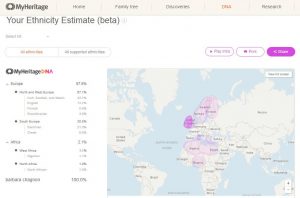 of my Ethnicity Estimates shows the approximate areas. Usually most companies that offer Autosomal DNA testing will give you an Ethnicity Estimate, but they may be different from company to company due to the formulations that they use. An Autosomal test is on your 22 Chromosomes which contain shared DNA from both your paternal and maternal sides
of my Ethnicity Estimates shows the approximate areas. Usually most companies that offer Autosomal DNA testing will give you an Ethnicity Estimate, but they may be different from company to company due to the formulations that they use. An Autosomal test is on your 22 Chromosomes which contain shared DNA from both your paternal and maternal sides family tree I was able to see how we are related on my paternal side. Not everyone that has a Match with you includes family tree information and not everyone is a member of MyHeritage.
family tree I was able to see how we are related on my paternal side. Not everyone that has a Match with you includes family tree information and not everyone is a member of MyHeritage.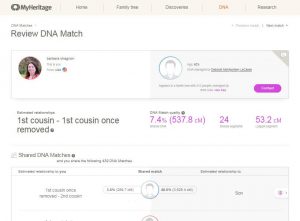
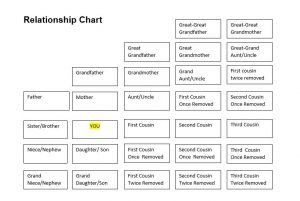
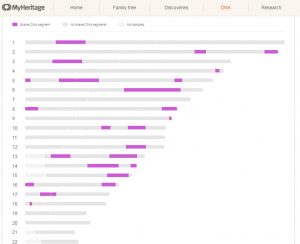
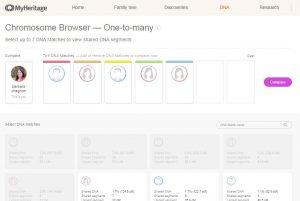

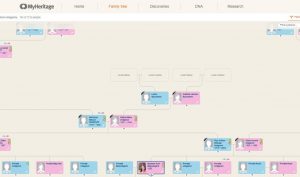

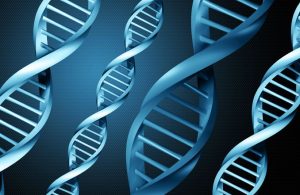 tools on their websites to help you to understand your results and connect with your matches.
tools on their websites to help you to understand your results and connect with your matches.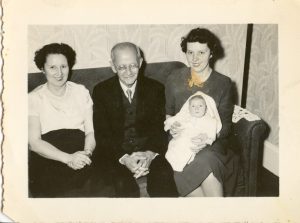
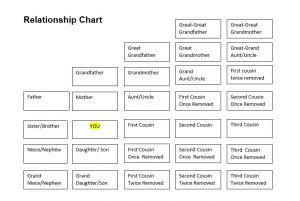
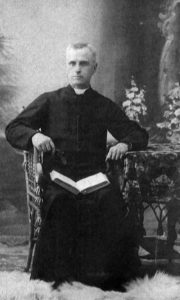
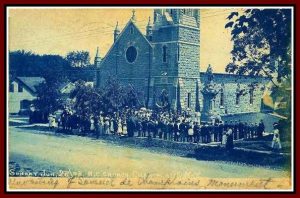
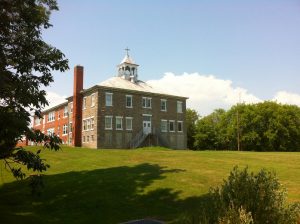 In 1906, through Father Chagnon’s efforts, a Catholic school was opened. The Daughters of the Charity of the Sacred Heart of Jesus, who were a group of nuns that came to America from France came to teach the students.
In 1906, through Father Chagnon’s efforts, a Catholic school was opened. The Daughters of the Charity of the Sacred Heart of Jesus, who were a group of nuns that came to America from France came to teach the students.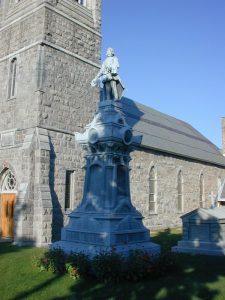
 The genealogy research took a huge leap forward when the world wide web came into our lives. It has given us the opportunity to connect to resources, places, and people and discover more about our family trees than ever. Now we have even more information since DNA (Deoxyribonulceic acid) came along. DNA is a molecule that contains the instructions an organism needs to develop, live and reproduce. These instructions are found inside every cell, and are passed down from parent to their children. So how is this information important to linking us to Indian descendants? Can science be more accurate than written documentation? Well, in this particular genealogy research case there are two thoughts (opinions) on this and a lot of information to back both sides. So lets look at some of this information and then you decide “Are we linked to an Indian descendant?”
The genealogy research took a huge leap forward when the world wide web came into our lives. It has given us the opportunity to connect to resources, places, and people and discover more about our family trees than ever. Now we have even more information since DNA (Deoxyribonulceic acid) came along. DNA is a molecule that contains the instructions an organism needs to develop, live and reproduce. These instructions are found inside every cell, and are passed down from parent to their children. So how is this information important to linking us to Indian descendants? Can science be more accurate than written documentation? Well, in this particular genealogy research case there are two thoughts (opinions) on this and a lot of information to back both sides. So lets look at some of this information and then you decide “Are we linked to an Indian descendant?” Who is this? This is Louis Bouchard. He was born September 18, 1850 in St. Paul’s Bay, Quebec. The son of Thomas Bouchard and Luce Sauliner. He immigrated to the US in 1870. Louis was in business for himself, selling wood and coal from the back yard of his home at 200 N. Champlain Street in Burlington, VT.
Who is this? This is Louis Bouchard. He was born September 18, 1850 in St. Paul’s Bay, Quebec. The son of Thomas Bouchard and Luce Sauliner. He immigrated to the US in 1870. Louis was in business for himself, selling wood and coal from the back yard of his home at 200 N. Champlain Street in Burlington, VT.